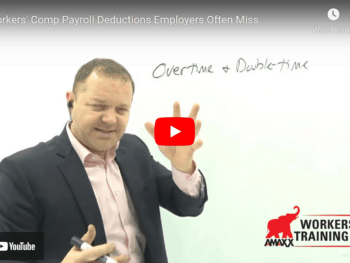Self-insured employers seldom are totally self insured. Almost all self-insured employers will have an excess insurer who is responsible for any workers’ compensation claim that exceeds a predetermined cut-off point for self insurance. The reason for this cut-off point is to prevent a catastrophic claim from causing financial damage to the employer.
Click Link to Access Free PDF Download
“Workers’ Comp Claims Review Checklist: 9 Must-Have, Serious-Impact Elements”
Excess Insurer Cut-Off Limit Ranges
The determination for when an excess insurer is needed depends on the size of employer and the available financial access of the employer to meet the statutory financial obligations incurred in compliance with the workers’ compensation laws. For some smaller self-insured employers, the cut off limit might be $250,000 or $500,000, while a large company with substantial assets might not have an excess carrier involved in their work comp claims until the catastrophic claim payments reach $2.5, or even $5 million on a claim.
Excess insurers normally require the self-insured employer to report to them any claim that has reached 50% of the self-insured employer’s cut off point. For example, if the employer is self-insured for the first $250,000 and the excess carrier must pay all claim cost over $250,000, the excess carrier will require the self-insured employer to report the details of the claim to them once the reserves reach $125,000.
In addition to the dollar amount where claims become reportable to the excess insurers, it is common practice for the excess insurer to require the self-insured employer to report all potential catastrophic injuries to the excess carrier, regardless of the dollar amount of reserves.
Catastrophic injuries that require reporting to the excess insurer normally include:
- Spinal injuries resulting in paralysis
- Brain damage with loss of cognitive function
- Brain stem injuries
- Third degree burns over 25% of the body
- Second and third degree burns combined that cover over 50% of the body
- Amputation of hand, arm, foot or leg
- Total vision loss
- Total hearing loss
- Reflex Sympathetic Dystrophy
- Post Traumatic Stress Disorder
- Occupational diseases requiring organ transplants
- Major accidents involving injuries to multiple employees at same time
- Permanent total disability of an injured employee
The self-insured employer should consult with the excess insurer for a listing of the type of catastrophic claims that should be reported. The excess insurer may have additional catastrophic injury types that are not included in the above list.
The report of the catastrophic injury by the employer to the excess insurer should include all pertinent details about the claim.
The claim report should include a detailed discussion of the following areas:
- How, when and where the injury occurred
- The nature of the injury
- The extent of the injury including the primary medical provider’s identification, the doctor’s diagnosis, prognosis, short-term treatment plan and long-term treatment plan
- The anticipated date of maximum medical improvement
- The probable level of disability the injured employee will incur
- The amount already paid for medical bills and indemnity benefits
- The amount of future reserves needed for future medical care and indemnity benefits
- The potential for subrogation
- The structured settlement company that will be utilized in the settlement process
- The potential for a Medicare Set-Aside Agreement
- Any other factor that may impact the total claim cost
The information needed by the excess insurer is in many ways similar to the information a workers’ compensation insurer would need if you were not self-insured. By reporting catastrophic claims timely and in detail to the excess insurer, the self-insured employer will have a smoother transfer of the high dollar claims when they are transferred to the excess insurer.
Author Rebecca Shafer, JD, President of Amaxx Risk Solutions, Inc. is a national expert in the field of workers compensation. She is a writer, speaker, and publisher. Her expertise is working with employers to reduce workers compensation costs, and her clients include airlines, healthcare, printing/publishing, pharmaceuticals, retail, hospitality, and manufacturing. She is the author of the #1 selling book on cost containment, Workers Compensation Management Program: Reduce Costs 20% to 50%. Contact:RShafer@ReduceYourWorkersComp.com.
Editor Michael B. Stack, CPA, Director of Operations, Amaxx Risk Solutions, Inc. is an expert in employer communication systems and part of the Amaxx team helping companies reduce their workers compensation costs by 20% to 50%. He is a writer, speaker, and website publisher. www.reduceyourworkerscomp.com. Contact: mstack@reduceyourworkerscomp.com.
©2013 Amaxx Risk Solutions, Inc. All rights reserved under International Copyright Law.













